Yr Wyddfa: Bananas cause problems on Wales' highest mountain
- Published

Alec Young says the national park's message is simple: "Take them home - don't fling them on the mountain"
There are many potential banana skins for walkers climbing Wales' highest mountain.
Now efforts are being made to highlight the problem of organic litter - including discarded banana peels - being left behind by visitors.
A solar-powered webcam will record just how long it takes for a banana skin to rot - which could be up to two years.
It is part of a project aimed at tackling litter on Yr Wyddfa.
Last year volunteers collected 550kg (1,212lb) of waste off the mountain, which is also known as Snowdon.
It has prompted park officials to push for Yr Wyddfa to become the world's first plastic-free mountain.
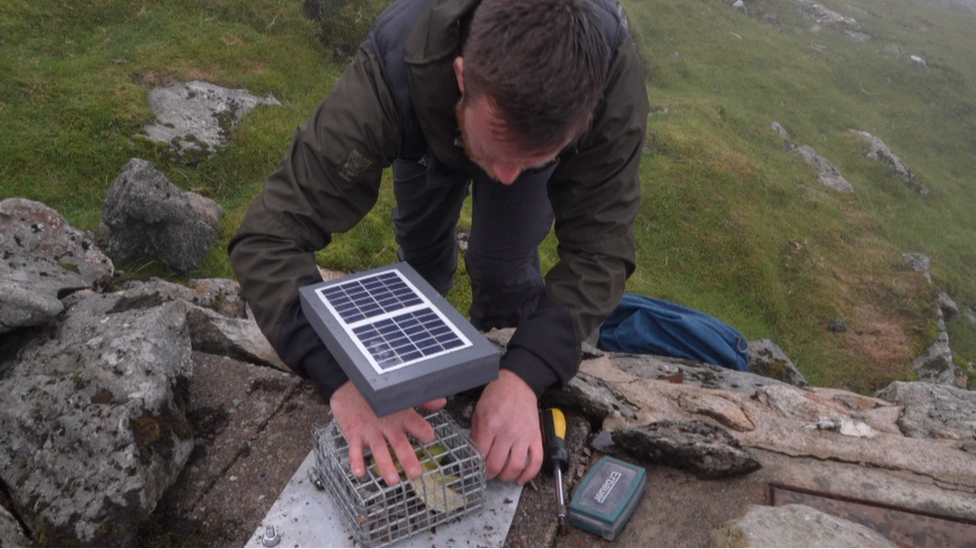
The banana-cam will start streaming shots of a decomposing banana skin as part of project to highlight organic litter on Yr Wyddfa - or Snowdon
But the banana-cam project also recognises that organic litter such as banana skins, orange peel and apple cores are also a huge problem.
"Banana skins are the fourth-biggest litter item we find on the mountain," said Alec Young, who is the plastic-free project officer for the Eryri National Park - or Snowdonia as many visitors know it.
"There's a bit of a lack of education around organic waste, and we're hoping to use the powerful messaging of plastic-free status to actually target all types of waste.
"We're looking to ensure that people think twice about flinging banana peels."
According to national park officials, banana skins not only take months and months to decompose, they could also alter the acidity balance of the soil they are rotting on.
"Which could obviously affect biodiversity and wildlife in the future," warned Mr Young.
The park staff had the banana-cam specially built to hold a skin in a metal cage at a secret location on the top of the mountain, which will record shots of the peel every few hours and then stream those images online.
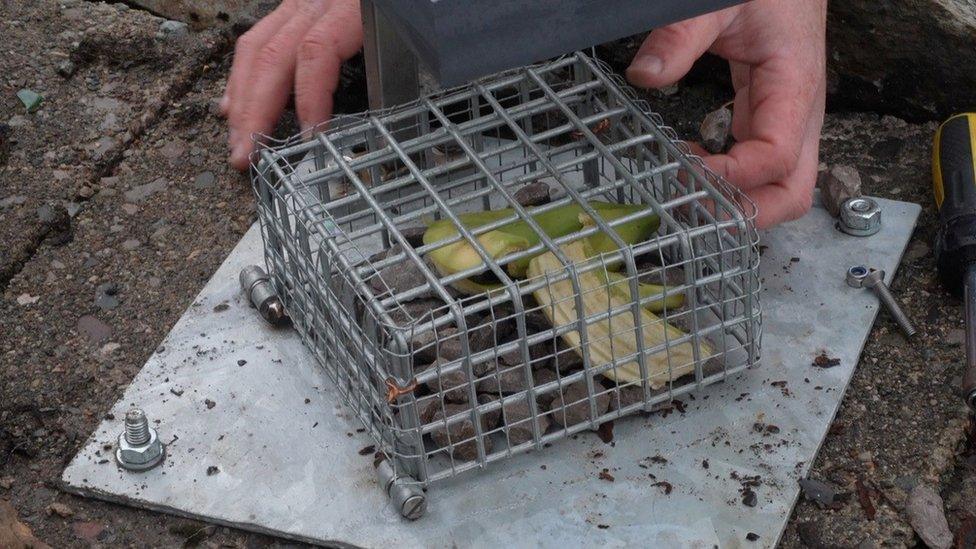
Officials expect the skin to take months - if not years - to rot, especially as it will become covered in snow and ice over the winter
"We want to get people talking about how they can prepare better for their adventures on the mountain, to make sure they are thinking twice about littering, and what they are doing with their waste," added Mr Young.
"Everyone should be taking it home with them."
But for now, litter remains a huge problem on the mountain which is visited by hundreds of thousands of people every year, eager to reach the 1085m (3,560ft) summit - either by walking or taking the Snowdon Mountain Railway to the top.
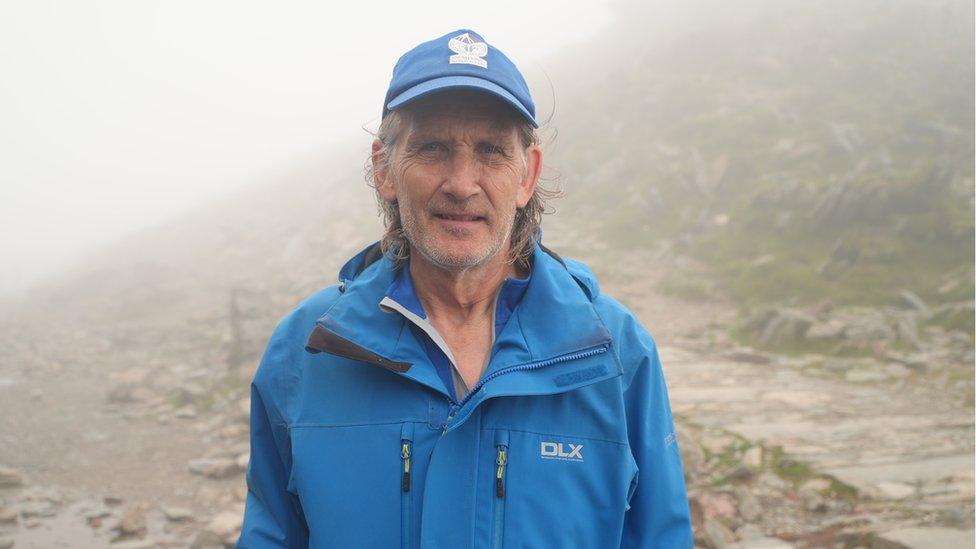
Volunteer national park warden Tony Ellis says people need to be educated about the problems of organic litter
Volunteer warden Tony Ellis is acutely aware - he spends at least one day a week walking the most popular paths with other volunteers, picking up the rubbish.
"We do find a lot of cans and bottles and things tucked under rocks - and an awful lot of tissues, which often contain microplastics," he said.
"But the only litter I've actually witnessed people dropping is banana skins.
"You'll see a banana skin flying through the air and we go over and have a word with people."
He said many people "just don't realise" how long it takes for the skins to rot, and the potential to "poison the soil".
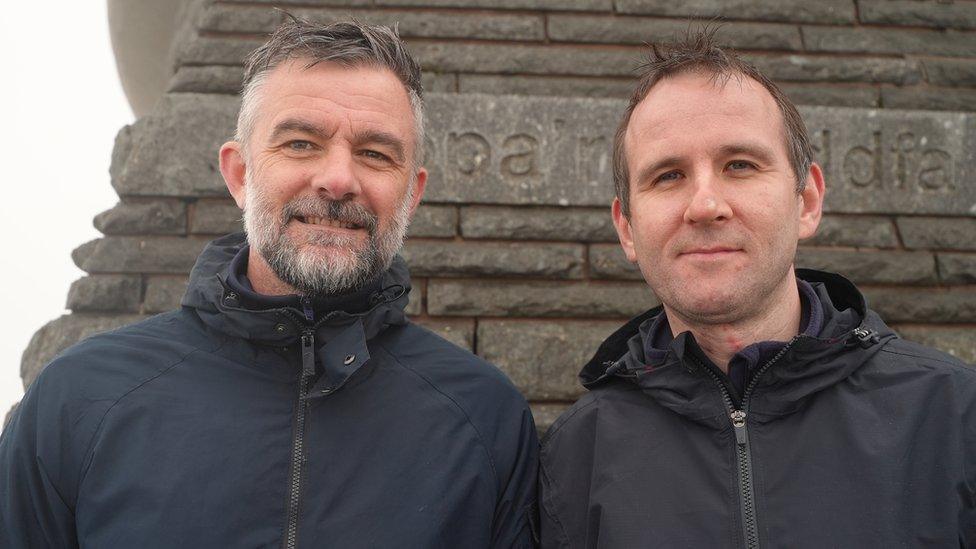
Scott Fenton and Ian Robertson said they would be taking their banana skins back down the mountain
Walkers Ian Robertson and Scott Fenton, from Scotland, said they would both be taking their banana skins back down the mountain.
"They can be a bit messy to put back in your bag - but if they take that long to go - I'll definitely take it back home with me," said Mr Robertson.
His friend had already packed the remains of his eaten banana away: "I think if you take something up the mountain, you take it back down with you."
Related topics
- Published10 June 2023

- Published20 April 2023
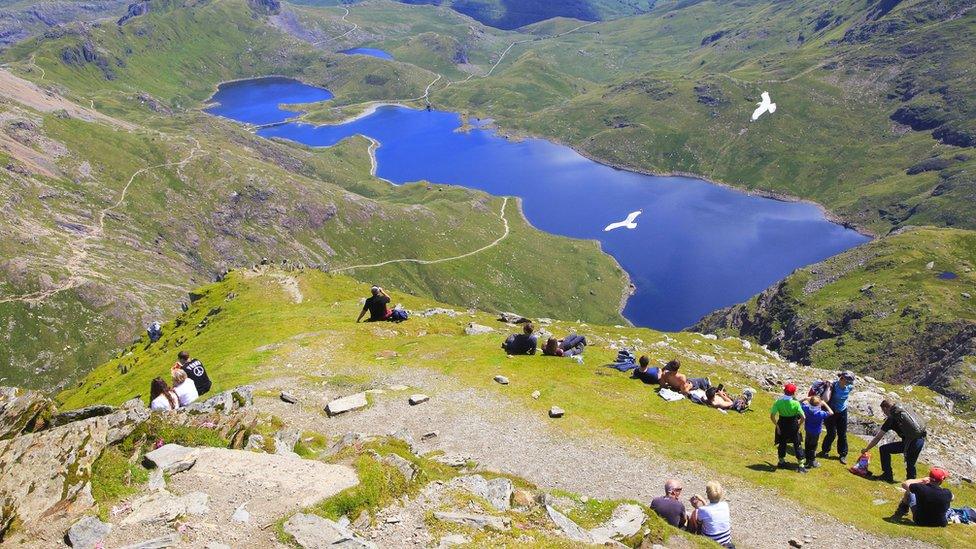
- Published22 May 2021
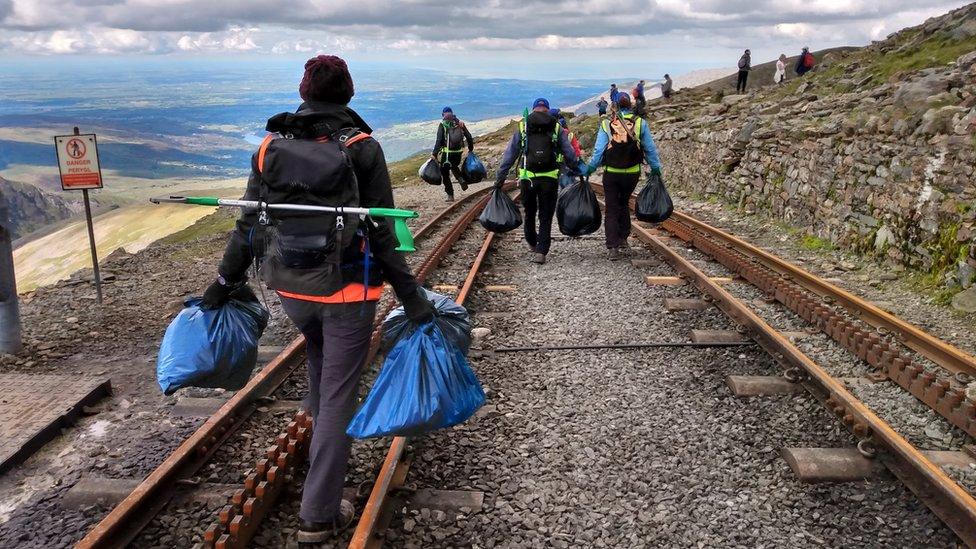
- Published31 August 2020
